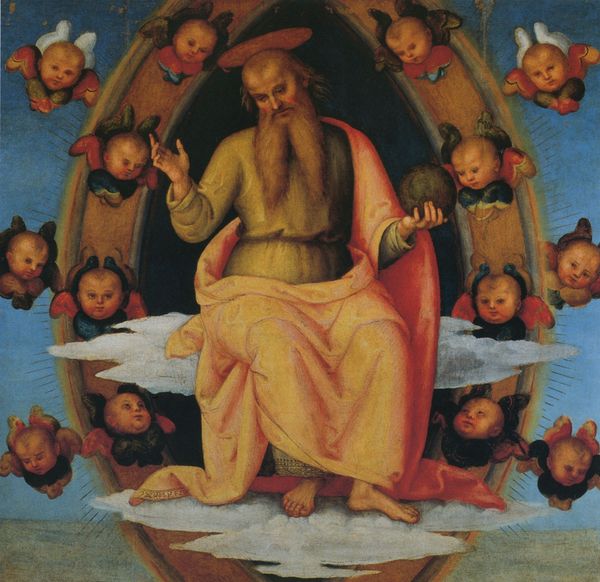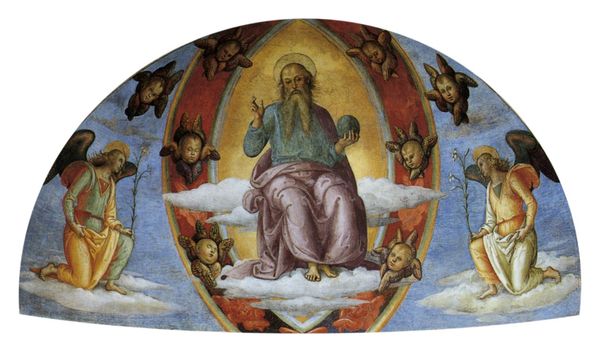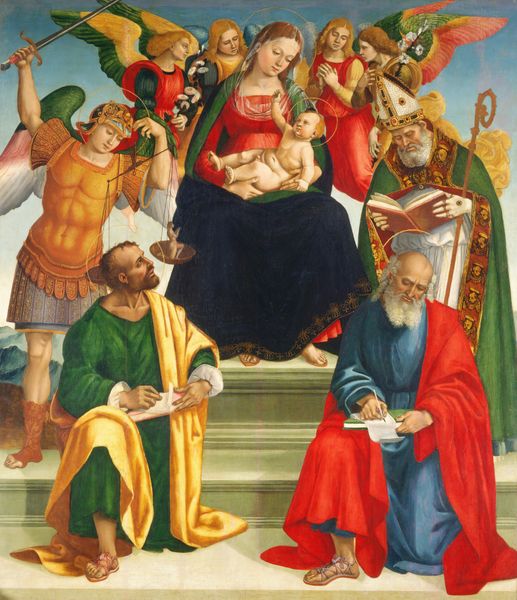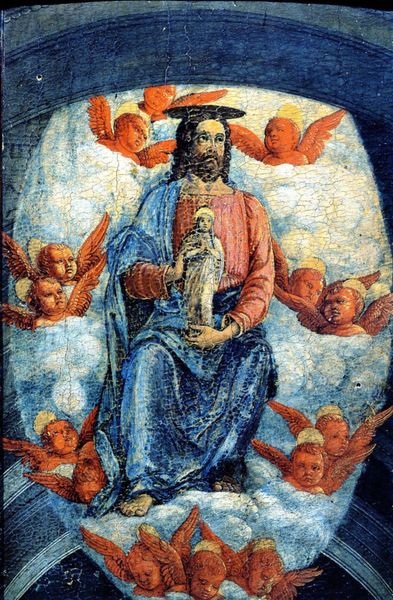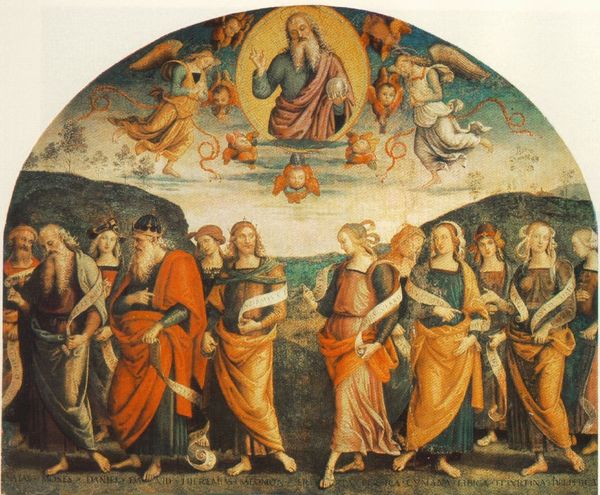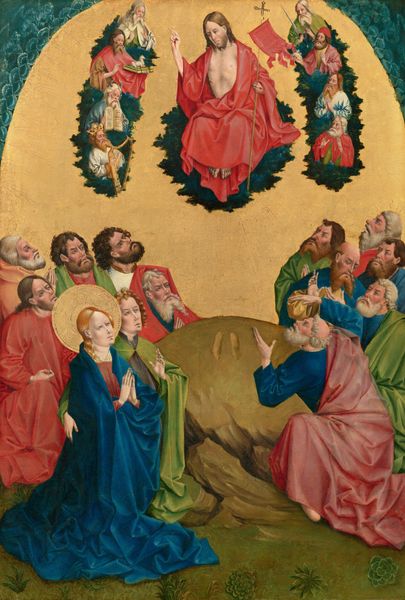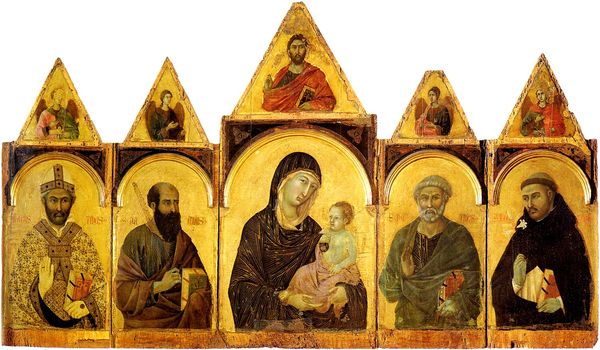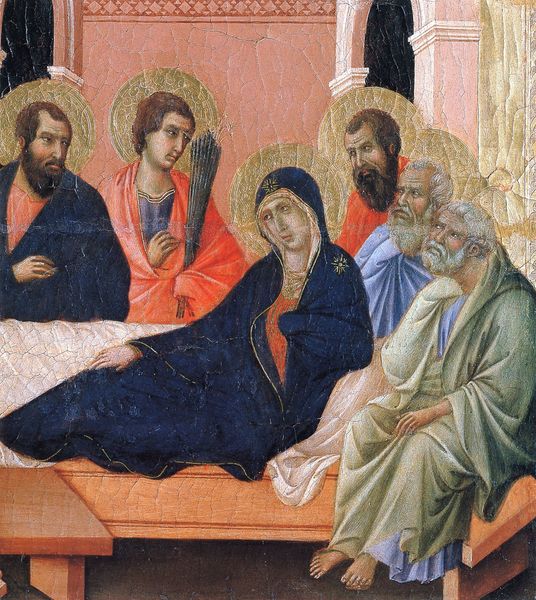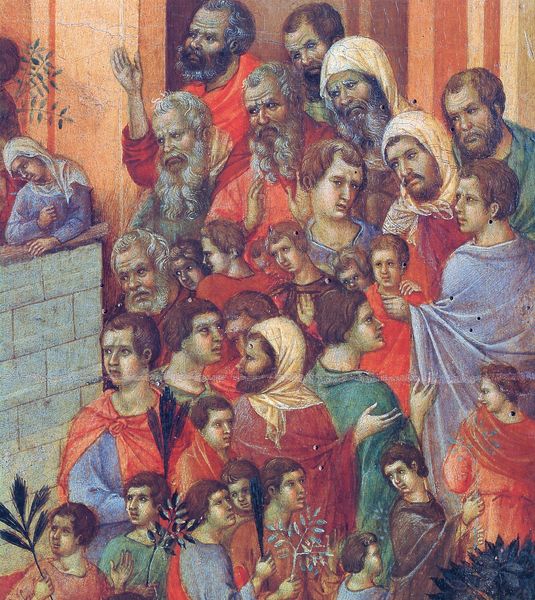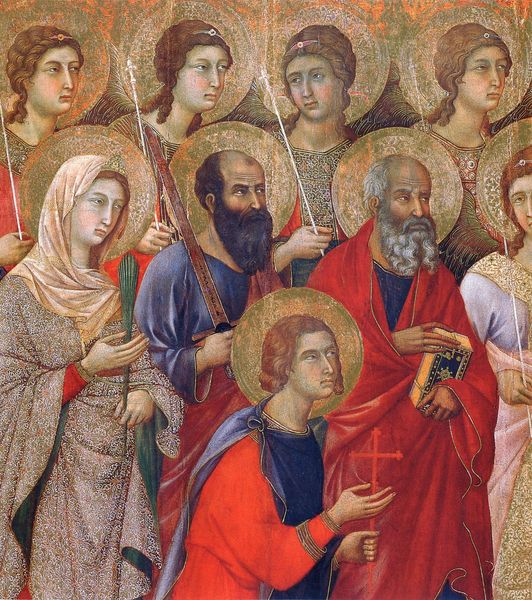
tempera, painting
#
high-renaissance
#
allegory
#
tempera
#
painting
#
figuration
#
arch
#
framed composition
#
christianity
#
italian-renaissance
#
angel
#
christ
Copyright: Public domain
This segment of a polyptych was painted by Pietro Perugino sometime around 1500, using tempera on wood. Tempera is a traditional method of painting. Pigments are bound in a water-soluble emulsion, usually egg yolk. In Perugino’s time, this demanded rigorous preparation. Panels had to be primed and sanded smooth. Natural pigments derived from minerals and plants would be ground by hand. Only then could the artist begin the painstaking process of applying successive layers of paint, each allowed to dry and harden. The effect of tempera is matte, not glossy like oil paint. This lends the scene a certain otherworldly clarity. The figures of God, the angels and cherubs seem to exist in their own plane, in contrast to the earthbound nature of human affairs. The amount of labor involved is striking, the result of craft traditions stretching back centuries. Considering materiality and process allows us to consider art and craft on equal terms.
Comments
No comments
Be the first to comment and join the conversation on the ultimate creative platform.
